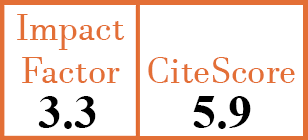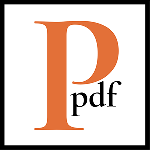Full Papers
Ultrasound-detected lumps in synovial fluid, a sonographic finding associated with non-inflammatory joint effusion
J. Ramírez1, C.D. Adao-Abe2, A. Mocritcaia3, A. Garcia-Gargallo4, J. Peñafiel-Sam5, C. Arango6, J.C. Sarmiento-Monroy7, H. Flórez8, J.A. Gómez-Puerta9, L. Alascio10, A.B. Azuaga-Piñango11
- Department of Rheumatology, Hospital Clínic i Provincial de Barcelona, Spain. fjramire@clinic.cat
- Department of Rheumatology, Hospital Clínic i Provincial de Barcelona, Spain.
- Department of Rheumatology, Hospital Clínic i Provincial de Barcelona, Spain.
- Department of Rheumatology, Hospital Clínic i Provincial de Barcelona, Spain.
- Department of Rheumatology, Hospital Clínic i Provincial de Barcelona, Spain.
- Department of Rheumatology, Hospital Clínic i Provincial de Barcelona, Spain.
- Department of Rheumatology, Hospital Clínic i Provincial de Barcelona, Spain.
- Department of Rheumatology, Hospital Clínic i Provincial de Barcelona, Spain.
- Department of Rheumatology, Hospital Clínic i Provincial de Barcelona, Spain.
- Department of Rheumatology, Hospital Clínic i Provincial de Barcelona, Spain.
- Department of Rheumatology, Hospital Clínic i Provincial de Barcelona, Spain.
CER18571
2025 Vol.43, N°9
PI 1577, PF 1581
Full Papers
PMID: 40658479 [PubMed]
Received: 25/01/2025
Accepted : 17/03/2025
In Press: 26/06/2025
Published: 18/09/2025
Abstract
OBJECTIVES:
Joint aspiration plays a crucial role in diagnosis and relieves symptoms but may be unnecessary in some cases. Identifying substitute indicators for synovial white blood cell (WBC) counts could provide alternatives. This study aimed to evaluate US-detected lumps (small hyperechoic structures detached from the synovium) in synovial fluid (SF) as potential diagnostic markers for non-inflammatory joint effusion.
METHODS:
We carried out a cross-sectional study. Consecutive patients with synovial effusion were selected. US, joint aspiration and analysis of the WBC count of the effusion were performed. Patients with crystal deposits were excluded. Lumps were defined as US small hyperechoic spots within the SF. Sensitivity, specificity, and ROC analysis determined the utility of lumps in distinguishing non-inflammatory from inflammatory effusions.
RESULTS:
A total of 108 patients with symptomatic synovial effusion underwent US imaging and joint aspiration (88.8% were knees). Before the joint aspiration, the clinician attributed the joint effusion to degenerative joint disease in 59 patients (54.6%) and inflammatory conditions in 49 patients (45.4%) based on previous imaging tests. Following the joint aspiration, non-inflammatory effusion (<2,000 cells/mm³) was observed in 54 patients (50%). US lumps were present in 40 patients (37%), predominantly with non-inflammatory SF (85%). SF with lumps had a lower mean WBC count (1,043 vs. 8,644 cells/mm³, p=0.0001). US lumps demonstrated diagnostic value for non-inflammatory effusion, with an AUC of 0.835, sensitivity of 65.3%, and specificity of 89.3%.
CONCLUSIONS:
US lumps in SF are strongly associated with non-inflammatory joint effusion. Their detection indicates low WBC counts, potentially reducing the need for joint aspiration, especially in patients with mild symptoms or hard-to-access joints.


